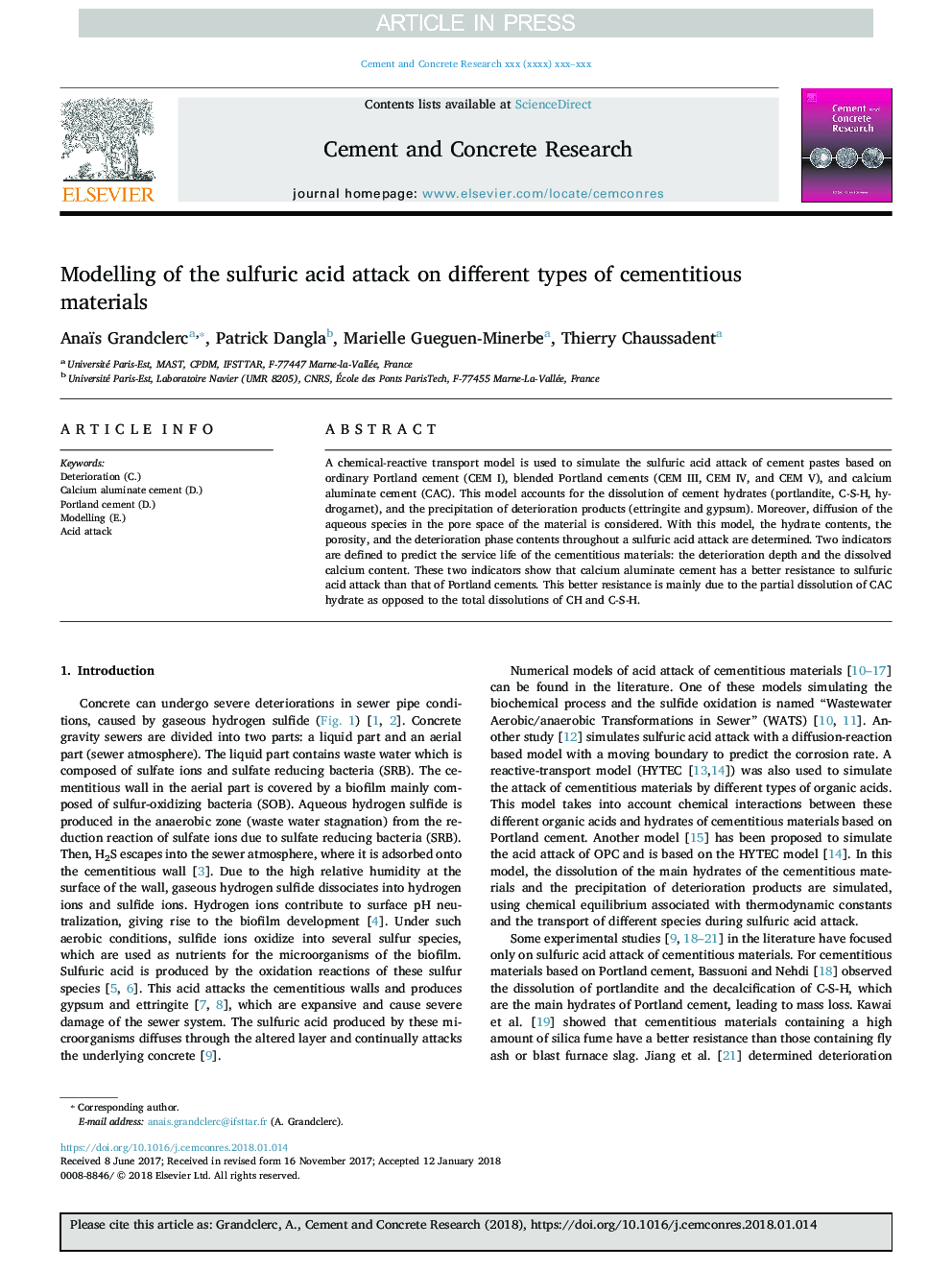| Article ID | Journal | Published Year | Pages | File Type |
|---|---|---|---|---|
| 7884850 | Cement and Concrete Research | 2018 | 8 Pages |
Abstract
A chemical-reactive transport model is used to simulate the sulfuric acid attack of cement pastes based on ordinary Portland cement (CEM I), blended Portland cements (CEM III, CEM IV, and CEM V), and calcium aluminate cement (CAC). This model accounts for the dissolution of cement hydrates (portlandite, C-S-H, hydrogarnet), and the precipitation of deterioration products (ettringite and gypsum). Moreover, diffusion of the aqueous species in the pore space of the material is considered. With this model, the hydrate contents, the porosity, and the deterioration phase contents throughout a sulfuric acid attack are determined. Two indicators are defined to predict the service life of the cementitious materials: the deterioration depth and the dissolved calcium content. These two indicators show that calcium aluminate cement has a better resistance to sulfuric acid attack than that of Portland cements. This better resistance is mainly due to the partial dissolution of CAC hydrate as opposed to the total dissolutions of CH and C-S-H.
Keywords
Related Topics
Physical Sciences and Engineering
Engineering
Industrial and Manufacturing Engineering
Authors
Anaïs Grandclerc, Patrick Dangla, Marielle Gueguen-Minerbe, Thierry Chaussadent,
